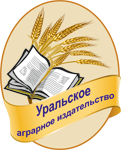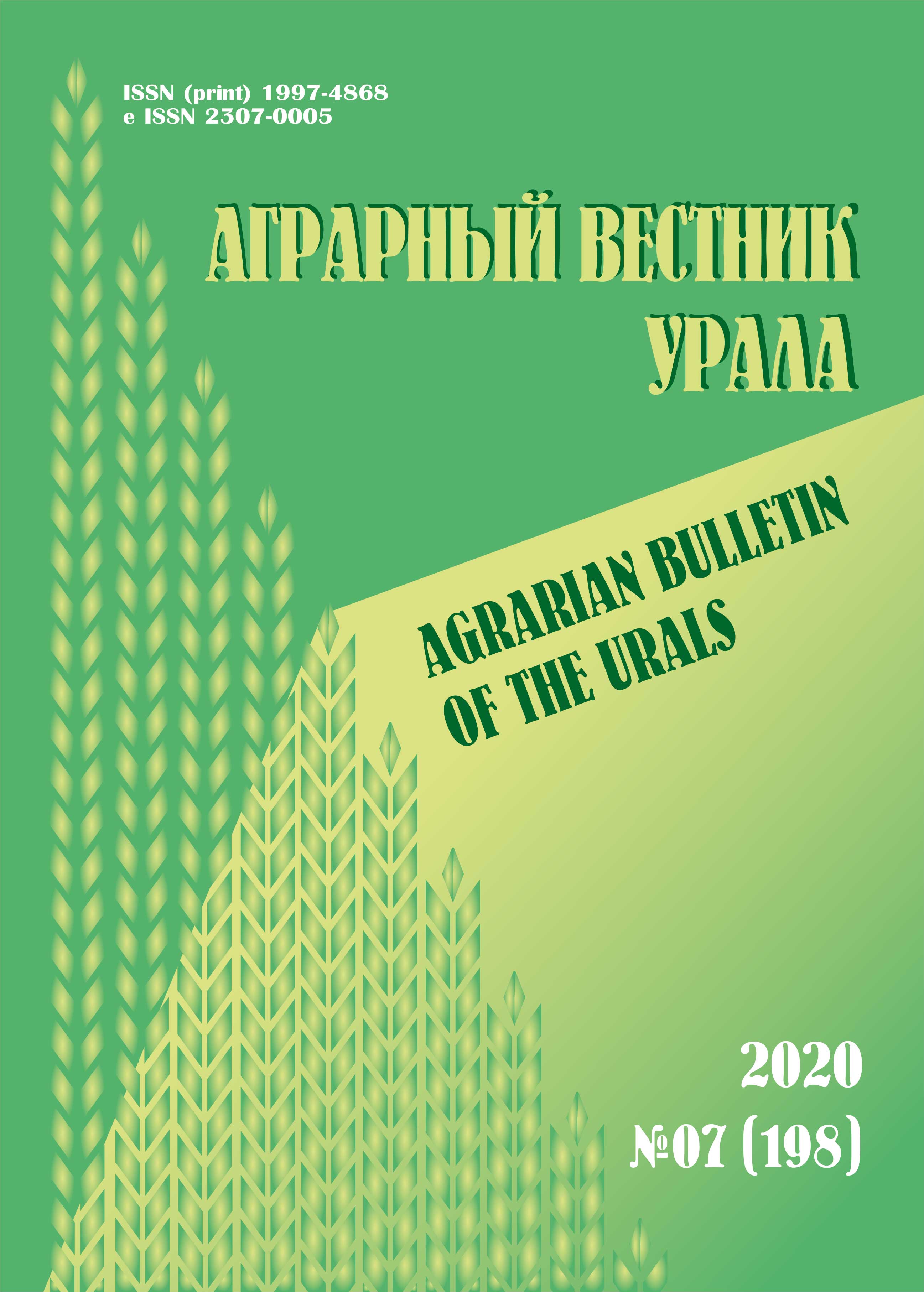Abstract. Goal: on the basis of the veterinary and laboratory diagnostics department with a testing laboratory, surveillance studies of fodder of vegetable origin from different manufacturers were carried out for the following indicators: urease activity, mass content of soluble protein. An experiment on the activity of urease in full-fat soybean feed was also performed. To assess the quality of heat treatment of soybeans and products of its processing, to analyze the stability of the parameter of urease in fodder soybeans. Methods. These studies were performed in accordance with GOST 13979.9-69; GOST 13979.3-68. Results. As a result of statistical processing, it was revealed that over the past five years, urease activity was above the maximum permissible value in 33 % of feed samples. In some samples of soybeans, this indicator was exceeded by 2.6 times, in the experimental sample of soybeans – by 5.8 times. It was also experimentally confirmed that this indicator is a stable parameter. Additionally, studies of the cumulative mass content of soluble proteins were conducted in these samples. It was found that in 13 % of soybean samples and its processed products, the result of soluble protein was in the range of 68.20–74.50 %, which indicates excessive heat treatment of this raw material. Based on the results of the research conducted, it was found that this feedstock did not always meet the stated requirements. In this regard, the conduct of these studies is necessary for further control of the technological process. Scientific novelty. Currently, the issue of the quality of fodder of vegetable origin and soybean-processed products remains relevant. Full-fat soybean, soybean extracted meal, soybean expeller meal are increasingly used for the preparation of animal feed for farm animals and poultry. In this regard, it became necessary to control the quality and safety of this feedstock.
stable parameter, urease activity, soluble protein, heat treatment, quality indicator, safety indicator
1. Albegova L. H. Ispol'zovanie soi v kormlenii remontnyh svinok // Izvestiya Gorskogo gosudarstvennogo agrarnogo universiteta. 2015. T. 52. № 3. S. 79-83. EDN: https://elibrary.ru/UHLDQH
2. Baytaev M. O. Soya kak istochnik proteina dlya sel'skohozyaystvennyh zhivotnyh v usloviyah Chechenskoy Respubliki // Nauchno-analiticheskiy zhurnal «Vestnik Chechenskogo gosudarstvennogo universiteta». 2016. Vyp. 2. S. 107-110.
3. Kotarev V. I., Lyadova L. V., Pronina E. V., Goncharova T. S. Vliyanie kachestva produktov pererabotki soi na polnocennost' kombikormov dlya kur // Veterinarnyy farmakologicheskiy vestnik. 2018. № 3 (4). S. 87-91. DOI:https://doi.org/10.17238/issn2541-8203.2018.3.87. EDN: https://elibrary.ru/UZPQQM
4. Gorb S. S., Klasner G. G. Removal of anti-nutritional substances soy beans by extrusion and microwave processing // Sovremennyy nauchnyy vestnik. 2016. T. 11. № 1. S. 94-97. EDN: https://elibrary.ru/WXEAHX
5. Dudaev Sh. M., Baytaev A. M., Shahtamirov I. Ya., Adamov S. I., Baytaev M. O. Ispol'zovanie metodiki opredeleniya aktivnosti ureazy v bobah soi, obrabotannyh termal'noy vodoy // Nauka i molodezh': materialy Vserossiyskoy nauchno-prakticheskoy konferencii studentov, molodyh uchenyh i aspirantov. Groznyy, 2017. S. 107-111. EDN: https://elibrary.ru/ZSZHWH
6. Kuscheva O. V. Perspektivy ispol'zovaniya novyh sortov soi dlya povysheniya produktivnosti sel'skohozyaystvennyh zhivotnyh na Yuzhnom Urale // Kormlenie sel'skohozyaystvennyh zhivotnyh i kormoproizvodstvo. 2015. № 4. S. 53-58. EDN: https://elibrary.ru/TNAHUF
7. Linnikov P. I. Rossiyskiy rynok soi: tendencii, perspektivy razvitiya // Agrarnyy nauchnyy zhurnal. 2018. № 10. S. 81-86. DOI:https://doi.org/10.28983/asj.v0i10.595. EDN: https://elibrary.ru/YLWDFR
8. Marinin A. V., Timchenko A. A., Morozova E. A. Himicheskiy sostav ekstrudirovannoy soi i ee ispol'zovanie v kormlenii zhivotnyh i pticy // Pischa. Ekologiya. Kachestvo: trudy XIV mezhdunarodnoy nauchno-prakticheskoy konferencii. Novosibirsk, 2017. S. 31-34. EDN: https://elibrary.ru/YLEEAD
9. Razrabotka reglamenta provedeniya ocenki kachestva syr'ya i proizvodimyh kombikormov dlya sel'skohozyaystvennyh zhivotnyh i pticy: nauchnye rekomendacii / I. M. Donnik, I. A. Shkuratova, N. A. Bezborodova [i dr.]. Ekaterinburg, 2008. 182 s. EDN: https://elibrary.ru/RLLUZP
10. Rukovodstvo po kormleniyu sel'skohozyaystvennoy pticy / Pod obsch. red. V. I. Fisinina. M.: Lika, 2018. 226 s.
11. Tleceruk I. R. Netradicionnyy istochnik pitaniya pticy // Izvestiya Gorskogo gosudarstvennogo agrarnogo universiteta. 2018. T. 55. № 2. S. 50-53. EDN: https://elibrary.ru/USPVSK
12. Fominyh A. V., Korolev A. E. Vliyanie polnozhirnoy ekstrudirovannoy soi na produktivnost' kur-nesushek // Kormlenie sel'skohozyaystvennyh zhivotnyh i kormoproizvodstvo. 2014. № 1. S. 52-58. EDN: https://elibrary.ru/RQCDMJ
13. Chernov D. S., Shuvalov A. M., Mashkov A. N. Issledovanie tehnologicheskih parametrov obrabotki soevyh bobov dlya polucheniya kachestvennyh kormov // Nauka v central'noy Rossii. 2019. № 5 (41). S. 34-40. DOI:https://doi.org/10.35887/2305-2538-2019-5-34-40. EDN: https://elibrary.ru/VIDIYU
14. Sharyga A. V., Perminov A. S. Primenenie zerna soi v racione kormleniya zhivotnyh // Pridneprovskiy nauchnyy vestnik. 2017. T. 9. № 2. S. 44-48.
15. Bellaloui N., Bruns H. A., Abbas H. K., et al. Agricultural practices altered soybean seed protein, oil, fatty acids, sugars, and minerals in the Midsouth USA // Frontiers in Plant Science. 2015. No. 6 (31). Pp. 1-3. DOI:https://doi.org/10.3389/fpls.2015.00031.
16. Jones F. T., Anderson K. E., Ferket P. R. Effect of extrusion on feed characteristics and broiler chicken performance // Journal of Applied Poultry Research. 1995. No. 4. Pp. 300-309. DOI:https://doi.org/10.1093/japr/4.3.300.
17. Leeson S., Atteh J. O. Response of broiler chicks to dietary full-fat soybeans extruded at different temperatures prior to or after grinding // Animal feed science and technology. 1996. Vol. 57. No. 3. Pp. 239-245. DOI:https://doi.org/10.1016/0377-8401(95)00847-0. EDN: https://elibrary.ru/ANQFJV
18. Hammon H. M., Metges C. C., Junghans P., et al. Metabolic Changes and Net Portal Flux in Dairy Cows Fed a Ration Containing Rumen-Protected Fat as Compared to a Control Diet // Journal of Dairy Science. 2008. No. 91. Pp. 208-217. DOI:https://doi.org/10.3168/jds.2007-0517.
19. Amanlou H., Maheri-Sis N., Bassiri S., et al. Nutritional value of raw soybeans, extruded soybeans, roasted soybeans and tallow as fat sources in early lactating dairy cows // Open Veterinary Journal. 2012. No. 2 (1). Pp. 88-94.
20. Harper M. T., Oh J., Melgar A., et al. Production effects of feeding extruded soybean meal to early-lactation dairy cows // Journal of Dairy Science. 2019. Vol. 102. No. 10. Pp. 8999-9016. DOI:https://doi.org/10.3168/jds.2019-16551.
21. Shishkin V. V., Burmaga A. V., Usanov V. S., Shulzhenko E. A. The technology of producing innovative feed additives for farm animals on the basis of soybeans // Research Journal of Pharmaceutical, Biological and Chemical Sciences. 2018. Vol. 9. No. 5. Pp. 1968-1971. EDN: https://elibrary.ru/YQAXAD









